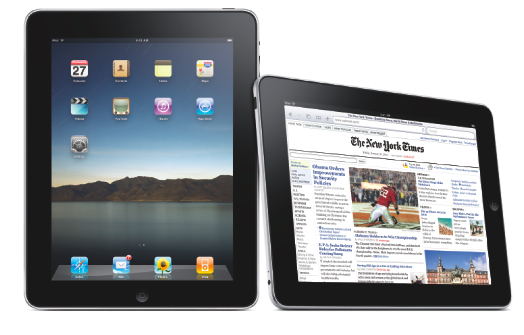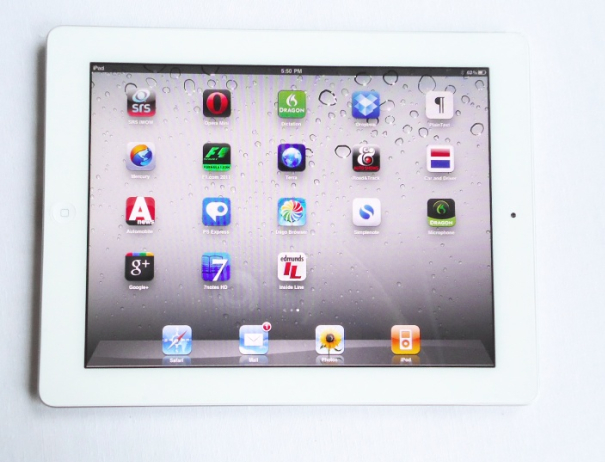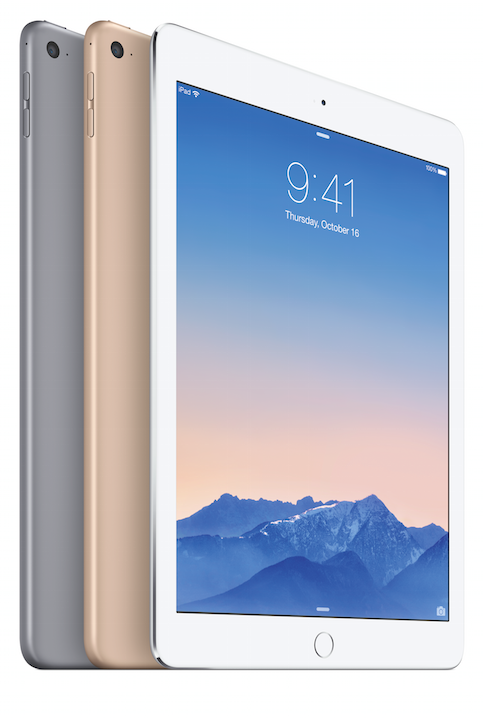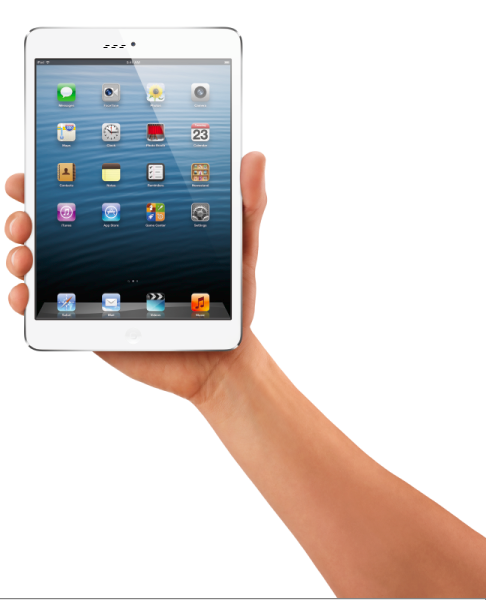iPad Turns Five – The ”Book Mystique
Five years ago this week, the late Steve Jobs took the stage at an Apple special press event to unveil the first Apple iPad — a slab-shaped, hand-holdable device that was to shake the personal computer world to its core. While the verdict is still not in as to whether tablet devices will eventually displace traditional laptop and desktop PCs (personally I’m doubtful), there’s no denying that the tablet computer and it’s smaller spin-off — the large-screen smartphone — are here to stay, and increasingly the choice of tool for business and other productivity-oriented users as well as consumers.
Notwithstanding all the crepe-hanging that’s been going on for the past 10 months or so over eroding iPad (and other brand tablet) sales growth, iPad is still Apple’s second best-selling product and not remotely likely to be a passing fad like the erstwhile PC netbook (although some commentators contend that the netbook really didn’t disappear and is being reincarnated as the Google ChromeBook). That phenomenal iPad sales pace of its first four years was not realistically sustainable, and from an Apple perspective, a substantial proportion of iPad market cannibalization is by the higher-profit iPhone 6 Plus anyway, so not a major problem.
It was always fantasy to imagine that iPad users would adopt a device replacement cycle similar to typical smartphone 18-month to two-year smartphone turnover. Mobile phones lead a comparatively harsh and hazard-fraught existence compared with your typical tablet, which while mobile is more likely to be used in home, office, or other workplace. Other factors are Apple’s legendary solid engineering and legendary build quality, which has made the iPad a durable critters, and the fact that all save for the first generation iPad are supported by the latest version of Apple’s iOS mobile operating system ( although I personally don’t recommend installing iOS 8 on anything older than a fourth-generation A6 powered iPad.
Nevertheless, even the original iPad with its puny one-core system-on-chip and paltry 256 MB or RAM is still quite usable for light duties like email and casual Web surfing, even though it can’t run many of the latest apps.
The iPad also stands to get a sales boost from the landmark joint business software development and hardware marketing alliance with IBM announced last year.
I have to admit that I was initially an iPad skeptic. I’m a consummate fan of the traditional laptop computer, which is in so many ways superior to a tablet save for two extremely important qualities – easy portability and compute-anywhere comfort. I’ve experimented with using my mid-2013 13-inch MacBook — a relatively small and light clamshell notebook — as a literal laptop device, it’s doable, but a lot more cumbersome than using my iPad 2 or iPad Air 2 in lounging mode.
Consequently the iPad quickly roped me in once I finally took the plunge. I skipped the original version, coming aboard a year and a half after the 2010 rollout with the iPad 2, which incidentally remains in fine fettle running iOS 7.1.2 after 3 1/2 years of intensive daily use,,and is still quite capable of serving as a general purpose computing device, although of course not as fast or as swish as the iPad Air 2 I bought last fall, with its anti-glare 2048×1536 resolution Retina display, 1.5 GHz three-core A8X SoC, and 2 GB of RAM, making it nominally as powerful as a mid-2011 MacBook Air.
In my estimation, iPad sales are also being inhibited by several productivity-defeating factors, all of which would be addressable if Apple had the will. These include the lack of multitasking and simultaneous display of multiple open windows, no file level user directory access, no mouse driver (and no, a stylus will not be an adequate substitute), horribly lame and inconsistent text selection/cut-/copy/paste, and no support for selecting and copying text from PDF files. All of these functions are supported on some other competing tablet devices, and it’s just stubbornness on Apple’s part that’s standing in the way. Hopefully, Apple’s new focus on courting the enterprise to iPad use will hammer home how egregious these shortcomings are to productivity-oriented users.
Meanwhile, if you are one of the latter and want to get along with just one do-all device, the iPad won’t cut it, and you probably need a full Windows compatible tablet PCS like the Microsoft Surface Pro. Personally, I’m reasonably content getting along with my MacBook Air/iPad tag-team until Apple comes to its senses on these issues, however long that may be.
Indeed, I would still like to have an iPad mini as a more portable, take-along-able device than either my Air 2 or MacBook Air. I’m not enticed, as many seem to be, with the “phablet” concept, which in my perception results in a still too small tablet and too-bulky smartphone.
Looking ahead, there’s the larger 12-ish inch iPad (Pro) rumored for release later this year. I’m keeping an open mind, but don’t really see the attraction if it’s to sell in the same range as an entry-level MacBook Air, which seems likely. Once you go that big, might as well go MacBook Air.
That said, happy anniversary iPad! Constructive (hopefully) criticisms aside, I’m a fan.






